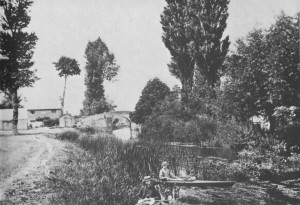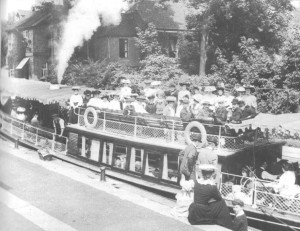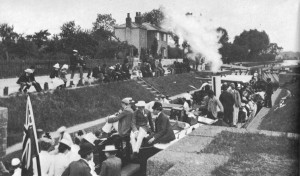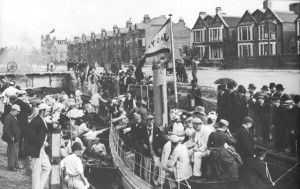Falling Down the Thames Blog 50, 25th February 2015
Then and Now
Krista and I are not the first persons to be enchanted by the River Thames, and we will certainly not be the last. Amoung those who have been particularly engaged by the Thames was Reginald Robert Bolland. Bolland began working for the Thames Conservancy in 1932, and in the following decades accumulated a large collection of what the author described as “Thamesiana.” This included books, photographic prints and paintings.
In 1974, Bolland published a book entitled Victorians on the Thames. It is a treatment of the late Victorian era, essentially 1880 to 1900, “a period during which Londoners discovered the upper Thames.” Given that Krista and I will soon be discovering all segments of the River Thames for ourselves, Bolland’s book seemed to beckon.
Among the treasures in Bolland’s book are myriad photographic images, sketches and paintings of the great river from the last years of the 19th century. Four photographs particularly caught my attention. They are sufficiently detailed that it should be possible to identify the exact spot from which the photographs were taken. And that is what I intend to do. For each of the following images, I will attempt to take a photograph in the same place in April of this year. I will then post those new images, along with the ones below, on this website as a basis of a then-and-now comparison. Stay tuned…
On Wednesday 22 April, just our second day of paddling, Krista and I will paddle under Radcot Bridge, where Oliver Cromwell is thought to engaged in a battle in 1645.
On Sunday 26 April, we will end our day’s paddle at Boulters Lock. On the hill behind the lock is the site of the first baptism by Saint Birinus, the first Bishop of Dorchester. Krista and I expect the lock to be slightly less crowded than on the day this photograph was taken.
We will paddle through Bell Weir Lock on Monday 27 April. This structure was named after its first keeper, Charles Bell. The scene is likely to appear a bit different for Krista and I, as the lock has been enlarged since this photograph was taken around 1900.
The second last lock on the non-tidal portion of the River Thames is Molesey Lock; we will paddle through it on Tuesday 28 April. Built in 1815, it was rebuilt in 1905, about five years after this image was captured.
- Glen
Photo credits: Victorians on the Thames, by Reginald Robert Bolland




